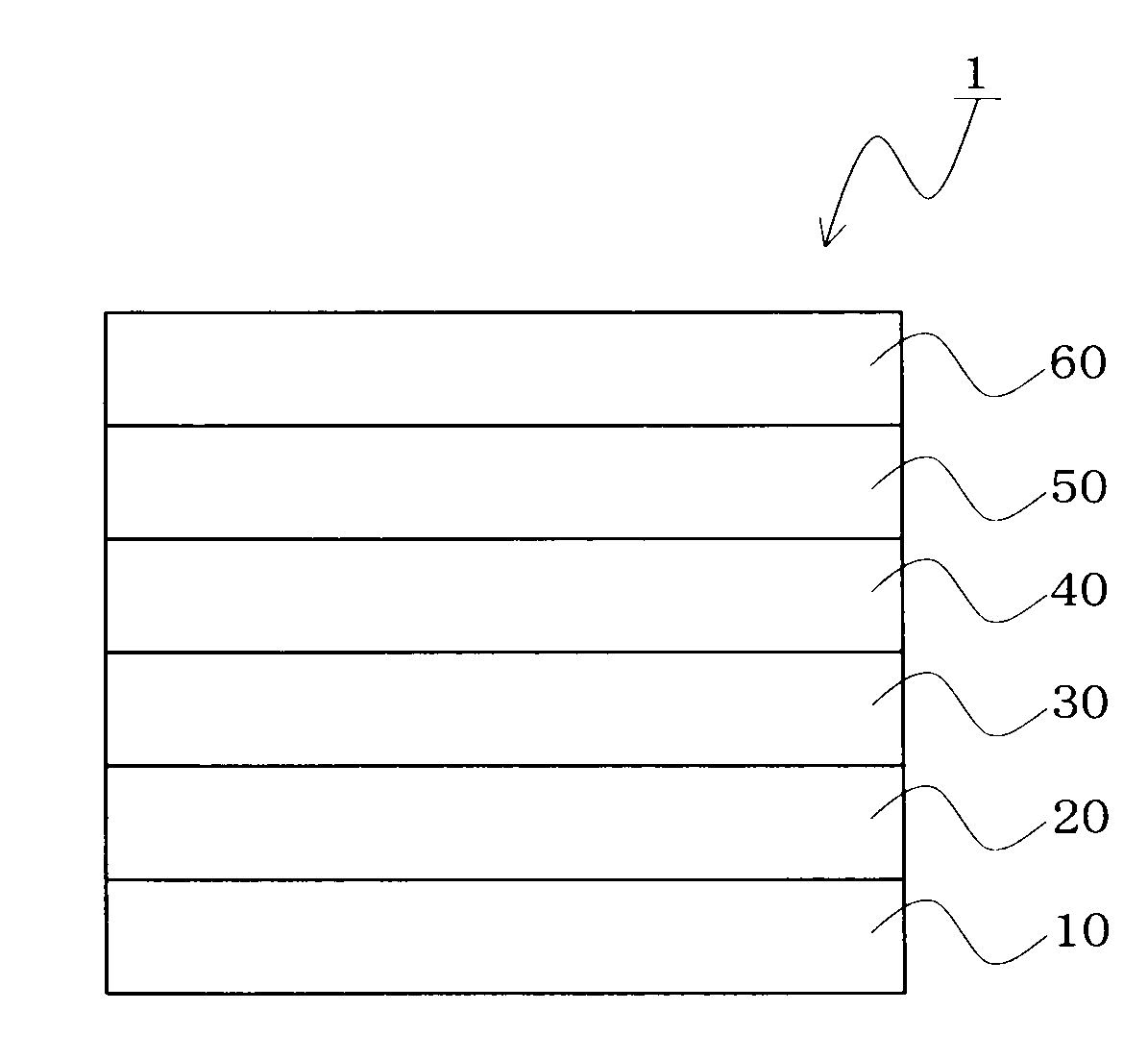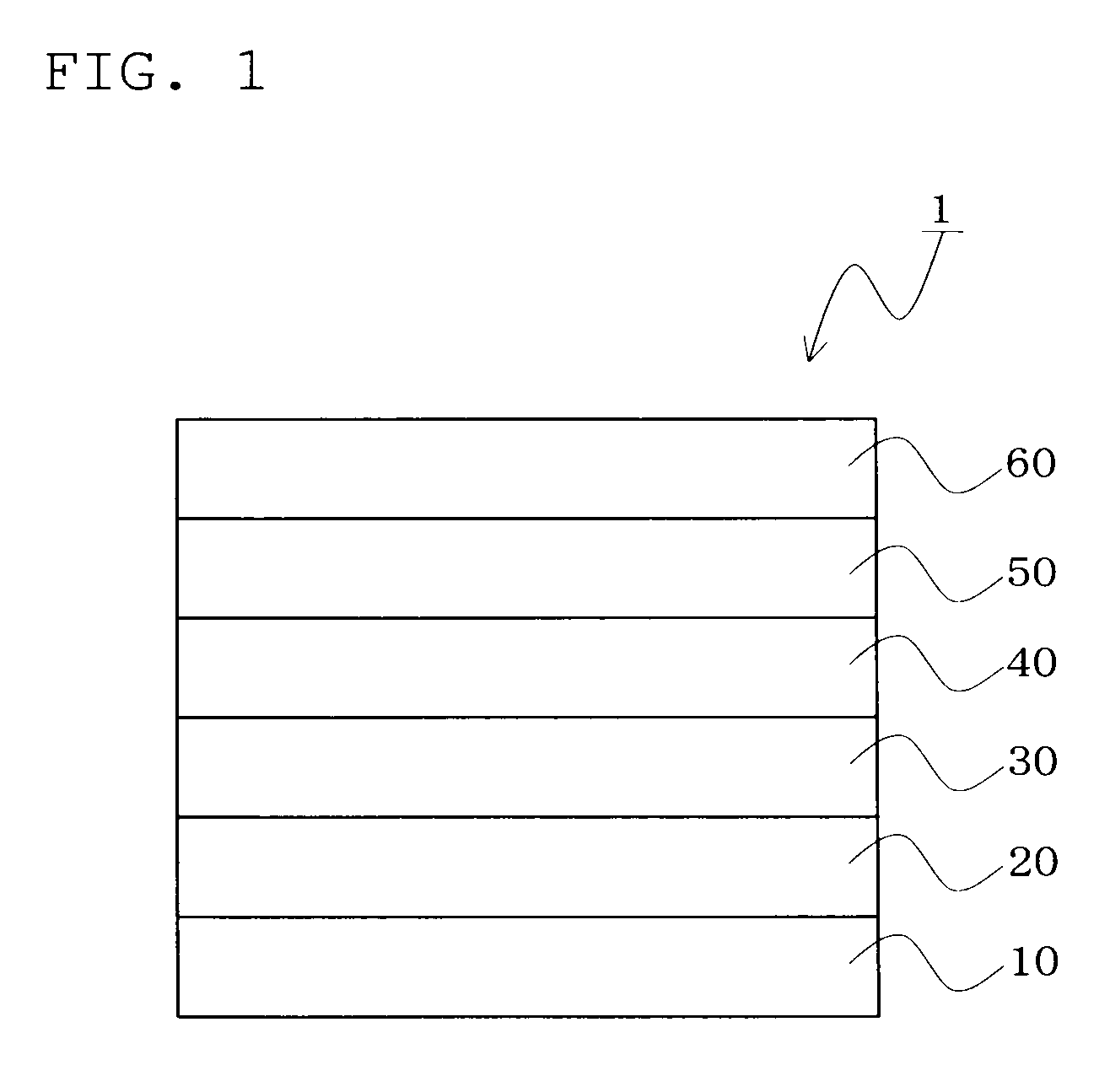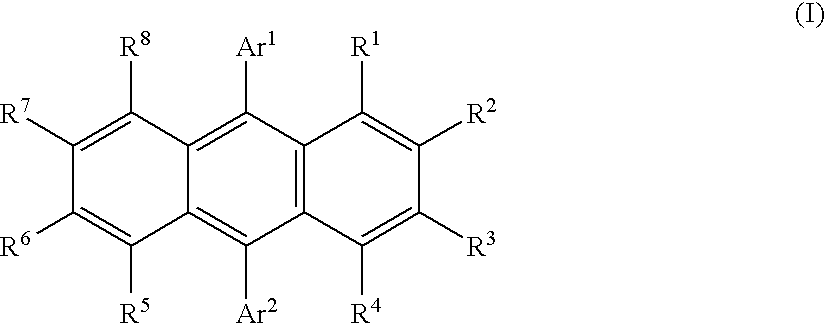Material for organic electroluminescent device, method for producing same and organic electroluminescent device
a technology of electroluminescent devices and materials, applied in the direction of luminescent screens for discharge tubes, group 3/13 element organic compounds, organic chemistry, etc., can solve the problem of reducing the luminescence with running time, and achieve the effect of improving the emission lifetime of the organic el devi
- Summary
- Abstract
- Description
- Claims
- Application Information
AI Technical Summary
Benefits of technology
Problems solved by technology
Method used
Image
Examples
production example 1
[0156]A compound (TH-01) having structural isomers was synthesized by the following process and the process will be described hereinafter.
Synthesis of TH-01
[0157]300 mL of 3N aqueous hydrochloric acid was added to 24.5 g of 2,4-diphenylamine in an argon atmosphere. The resulting mixture was heated in an oil bath to 60° C., and then stirred for 4 hours to form a hydrochloride salt (a white suspension).
[0158]This white suspension was cooled to 5° C. in a salt-ice bath, and then 60 mL of an aqueous solution containing 8.27 g of sodium nitrite was dripped for 30 minutes therein while stirring such that the liquid temperature of the white suspension did not exceed 10° C. The reddish brown solution produced was further stirred for 1 hour at 5° C. to prepare a diazonium salt solution.
[0159]180 mL of an aqueous solution containing 60 g of potassium iodide was prepared in a beaker, and then the diazonium salt solution prepared was gradually added therein for 30 minutes. The resultant solutio...
example 1
[0174]6.0 g of the sample A prepared in Comparative example 2 was placed into a sublimation refining equipment again, and the equipment was filled with nitrogen. The pressure was reduced to 5×10−4 Pa and sublimation refining was conducted at heating temperatures of 320 to 340° C. under shading. The treating time was 1 hour. The refined product obtained (5.3 g) was taken as a sample B. The ratio (t / c) of the sample B was 2.2.
example 2
[0175]3.0 g of the sample B prepared in Example 1 was placed into a sublimation refining equipment again, and the equipment was filled with nitrogen. The sample was heated at temperatures of 320 to 340° C. for 2 hours under shading and normal pressure. The heated sample was taken as a sample C. The ratio (t / c) of the sample C was 99.
[0176]The following organic EL devices were fabricated and evaluated by using TH-01 which had not been heated and the samples A to C which had been subjected to sublimation refining or heating.
[Organic EL Device]
PUM
| Property | Measurement | Unit |
|---|---|---|
| temperature | aaaaa | aaaaa |
| temperature | aaaaa | aaaaa |
| transmittance | aaaaa | aaaaa |
Abstract
Description
Claims
Application Information
 Login to View More
Login to View More - R&D
- Intellectual Property
- Life Sciences
- Materials
- Tech Scout
- Unparalleled Data Quality
- Higher Quality Content
- 60% Fewer Hallucinations
Browse by: Latest US Patents, China's latest patents, Technical Efficacy Thesaurus, Application Domain, Technology Topic, Popular Technical Reports.
© 2025 PatSnap. All rights reserved.Legal|Privacy policy|Modern Slavery Act Transparency Statement|Sitemap|About US| Contact US: help@patsnap.com



